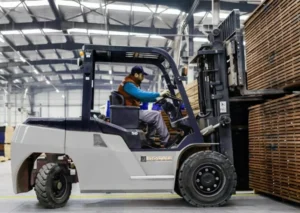In a world where fashion often mirrors the pulse of society, Trapstar stands out as more than just a clothing brand. It’s a lifestyle, a movement, and above all, a symbol of rebellion and cultural pride. From its humble beginnings on the streets of London to becoming a global streetwear powerhouse, Trapstar has etched its name in the fashion world with bold designs, underground roots, and unapologetic attitude.
Let’s take a closer look at how Trapstar became a symbol of rebellion and culture, and why its impact continues to grow in 2025.
The Origins: Born on the Streets of London
Trapstar was founded in 2005 by three friends—Mike, Lee, and Will—who were inspired by London’s raw street culture, hip-hop, grime, and the spirit of DIY creativity. It started with graphic tees sold from car trunks and through word-of-mouth buzz. Unlike polished, mainstream brands, Trapstar embraced an edgy, underground vibe that instantly clicked with the youth.
The name “Trapstar” itself reflects a powerful message: anyone from the trap (struggle) can become a star.
The Brand’s Message: Power, Identity, Rebellion
Trapstar has never been just about fashion. It’s about identity and self-expression. In a society where young people often feel unheard, Trapstar gave them a voice—through clothes. Every collection shouts boldness and rebellion, with slogans like “It’s A Secret” and “Underground Heroes.”
The designs lean into mystery, resistance, and a non-conformist spirit—qualities that resonate with marginalized communities, creatives, and trendsetters alike.
The Influence of Music and Pop Culture
From the start, Trapstar was closely tied to UK grime and rap culture. Artists like Stormzy, Skepta, and Giggs proudly wore the brand before it ever hit the mainstream. This grassroots support helped solidify Trapstar’s position as authentic streetwear, not a manufactured trend.
International stars like Rihanna and A$AP Rocky also began sporting Trapstar, catapulting it onto the global stage. Suddenly, what started in London was now being seen in Los Angeles, Paris, and Tokyo.
Collaboration with Roc Nation: A Turning Point
In 2016, Trapstar reached a major milestone when Jay-Z’s Roc Nation invested in the brand. This partnership gave Trapstar the global exposure it deserved while keeping its rebellious DNA intact. It proved that streetwear, when done authentically, could bridge the gap between underground and mainstream.
The Roc Nation collaboration wasn’t just about money or fame. It validated what Trapstar stood for: resilience, authenticity, and community roots.
Trapstar as a Symbol of Rebellion
Trapstar thrives on its anti-establishment image. The brand’s aesthetics often feature military-style jackets, bold typography, and dystopian graphics. These elements reflect defiance—not just against fashion norms but societal expectations.
In a world driven by perfection and status, Trapstar encourages wearers to be raw, real, and unapologetic. That’s why so many youths gravitate toward it—it’s not just clothing; it’s armor.
A Cultural Movement, Not Just a Brand
More than fashion, Trapstar is a community-driven movement. Pop-up events, limited drops, and secret launches help build a sense of exclusivity and underground appeal. The brand taps into the thrill of belonging to something bigger, something rebellious and cool.
Trapstar also uses its platform to amplify voices—partnering with young creatives, spotlighting independent artists, and giving back to local communities. It’s not performative; it’s part of the brand’s DNA.
How Trapstar Redefined Streetwear
Unlike high-end fashion houses that later jumped on the streetwear bandwagon, Trapstar helped shape the culture from the ground up. It didn’t follow trends—it created them.
Here’s how Trapstar redefined the game:
- Mystique: “It’s A Secret” campaigns kept fans curious and engaged.
- Limited Drops: Scarcity made pieces more desirable.
- Street-to-Stage Fashion: From underground gigs to arena tours, the look translated.
- Inclusivity: No elitism—just style for the streets, by the streets.
Trapstar in 2025: What’s Next?
As of 2025, Trapstar continues to innovate. The brand is pushing boundaries with tech-infused fabrics, sustainable collections, and even digital wearables for the metaverse. But its core stays the same—gritty, grounded, and culturally rich.
From local to global, Trapstar hasn’t lost its soul. And that’s why it remains such a powerful symbol.
Conclusion: More Than Fashion, It’s a Statement
Trapstar didn’t just join the streetwear revolution—it led it. With every hoodie, jacket, and tee, the brand carries the legacy of urban struggle, creative fire, and cultural pride.You can check out trapstarss.com.
To wear Trapstar is to make a statement: you stand for authenticity, rebellion, and community. And in a fashion world flooded with fast trends and fakes, that message is more important than ever.
FAQs
1. What does Trapstar stand for?
Trapstar stands for transforming adversity into success. It’s about rising from the struggle (“the trap”) and becoming a star.
2. Is Trapstar a UK brand?
Yes, Trapstar was founded in London and remains deeply rooted in UK street culture.
3. Why is Trapstar so popular in music culture?
Many artists resonate with its message of rebellion and authenticity. Its close ties with UK grime and international hip-hop helped boost its credibility.
4. Where can I buy authentic Trapstar clothing?
You can purchase it from Trapstar’s official website, select global retailers, and authorized streetwear stockists.
5. What makes Trapstar different from other streetwear brands?
Trapstar blends cultural storytelling, underground appeal, and premium quality, making it more than just a fashion label—it’s a movement.





